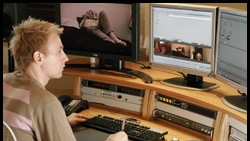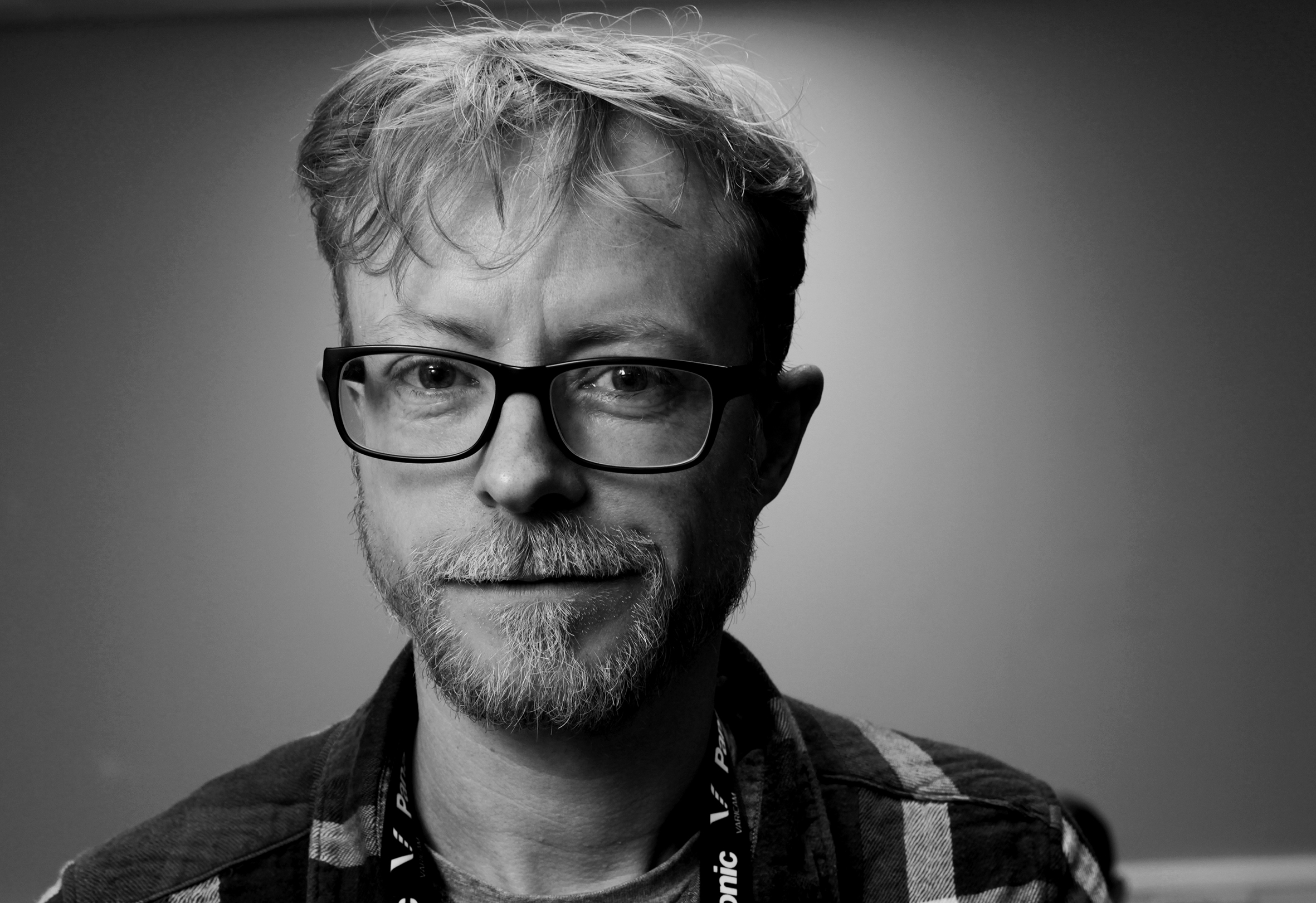Editing systems: The latest technology
Outside the more demanding areas of close-to-air graphics, compositing and finishing (where there is a wide choice of good solutions), the favored products for day-to-day program editing tasks are those from Avid and Apple. Production companies seeking in-house offline creativity or start-up boutiques tend to be attracted by the minimum investment and maximum capability of Apple's Final Cut Pro (FCP). Larger facilities with legacy kit and an embedded workflow are more likely to follow Avid's upgrade path. Increasingly, however, both platforms will exist in parallel within the same facility as business models adapt to new workflows.

ENVY, a post facility in London, uses Avid's DS Nitris for SD/HD editing and compositing.
The traditional model saw post houses amortize equipment over time by charging the clients a premium for use of the kit in “hero suites.” Now that technology is a commodity in the form of off-the-shelf packages, facilities are forced to adapt their business toward the craft of the editor and a more collaborative environment.
Some facilities view the transition to HD as a continuation of the premium end of the market and an opportunity to extend the life cycle of equipment. Their investment in online accessories such as storage, waveform monitoring, audio metering and grade-one monitors, coupled with a roster of craft editors, guarantee a broadcast-quality product for producers wary of finishing internally. It is more costly to transition skills and a decade's worth of investment to a new platform, particularly when a facility is known for offering a certain type of service.
Avid's entrenchment has, in part, been due to the skills of freelance editors brought up on what was the standard broadcast toolset. Yet Apple has been successful selling into media centers and education establishments and also runs cross-platform training courses. Perhaps more significantly, facility juniors are learning to edit on FCP in downtime, and more editors are acquiring dual skills. The critical mass of FCP editors hasn't arrived yet, but it's expected to in about 18 months.
Pragmatically, even the most die-hard Avid house knows it must include FCP in its mix. Clients, particularly owner/operators or producer/editors, are increasingly familiar with FCP as an offline tool and expect to follow a project through to online on the same system. Facilities have had the odd FCP chugging away in the background for a while, but now it's become front-of-house for a growing number of factual, reality and documentary producers acquiring and posting in DV.
BBC production
Get the TV Tech Newsletter
The professional video industry's #1 source for news, trends and product and tech information. Sign up below.
In the UK, this demand is being driven by the BBC, whose largest production department — Factual and Learning — has standardized on DV and Final Cut. The BBC has deliberately restricted its future editing decisions to Avid and Apple and views them as parallel rather than integrated paths suitable for different workflows. According to BBC Technology controller of production, Paul Cheesbrough, the advantages of selecting two vendors are:
- The costs of ownership and management are kept low.
- The BBC can help set technical standards for metadata management from acquisition to editing.
- It keeps them in competition, which must be good for the industry as a whole.
As more advanced feature sets are used offline, offline and online skill sets are beginning to blur. However, production management like Cheesbrough are keen to ensure that there remains a distinction so that even if rough cuts and online are performed on the same machine, the editing process is not decrafted.
3Sixtymedia, the UK's ITV facility wing, is trialing two FCPs alongside 20 Media Composers. Final Cut is not seen as an instant, cheap replacement but as a viable alternative to Avid.
Evolutions in London uses Avid's Symphony Nitris for its features such as real-time scene-to-scene color correction and keying.
London facilities
In London's Soho district, St. Anne's Post (part of the Ascent Media Group) is road testing an FCP system because of client demand, although it remains a predominantly Avid house. Its future bread and butter work looks increasingly to be in online as more and more offline work is conducted by producers who find it cost efficient to set-up a desktop suite in their production office but also like being creatively close to their projects.
Soho's biggest facility launch in six years, the 8M Euro Envy, also offers a mix of FCP and Avid. It has 12 Adrenalines hanging off a 2.5TB Unity server, two FCP seats with separate 2TB storage and three DS Nitris for online. Its workflow is configured for offline, but it has the capacity to work at online resolutions across all of these systems.
Although increasingly sited together, the two platforms rarely share work because their media exchange is notoriously incompatible. Projects are kept within a single platform wherever possible to avoid having to rebuild (or worse, lose) information when exporting files. It's one reason why facilities feel obliged to field an FCP. Avid offers active APIs for third-party metadata exchange, while Apple contends it has completely opened up FCP and QuickTime.
Interchanging projects
Middleware can ease the unpredictability of transfer between the two systems, and most facilities employ the software plug-in Automatic Duck to patch over this workflow wrinkle. AAF (an updated version of Avid's Open Media Framework) offers other solutions, but this has had limited industry support because it's viewed as an Avid technology. Apple proposes XML Interchange Format and publishes a Final Cut document type definition, which several developers have used to build products around an FCP suite.
Advocates claim the software's great advantage is that system performance is determined by its specification: a 2.5GHz G5 Mac with a video card (from Blackmagic Design or AJA), plus Xserve RAID and an Xsan server dependent on the resolutions required.
By adding boards and storage, the software is inherently scalable, a key benefit for new users like 3Sixtymedia who want to prepare for HD but don't have the incoming work to justify wholesale HD investment.
Avid NLEs
London's ENVY post facility has equipped each Avid DS Nitris with 3.4TB of local storage, totalling eight hours of HD.
Avid's product line is stratified with different systems needed for different jobs:
- Xpress Pro is intended for laptop field edits or desktop production using DV ingest (a Mojo hardware addition theoretically gets you to HD).
- Media Composer Adrenaline is the offline and online flagship, which requires a DNxcel hardware booster for HD.
- The SD-only Symphony Meridien is being phased out in favor of Symphony Nitris — a finishing system for broadcast, which features secondary color correction in real-time HD (uncompressed or DN×HD).
Avid's top-of-the-range DS Nitris offers deeper levels of color correction (4:4:4), tree-based compositing and 2k DPX file handling for the commercials market. Efforts are being made to align the Symphony and DS interfaces, but there are distinct differences for editors swapping between them.
Moving up the Avid hierarchy means buying a whole new system, so a producer or editor has to know exactly what he or she wants out of the system before they book or buy. This becomes problematic for some customers concerned about the flexibility to perform DV through to HD.
Avid's treatment of HD is also an issue. The DN×HD codec effectively processes HD at 4:2:2 and SD data rates. For cutting, conform and finishing within the Avid environment, this provides startling performance: less bandwidth requirements, less processing and less complex hardware. But the system doesn't support uncompressed HD at a time when acquisition technology is moving toward varieties of HD (from HDV to HDCAM onto uncompressed or tapeless capture). This provides a tough roadmap for Avid to follow.
Avid believes DN×HD is the superior mastering quality over DVCPRO HD or HDCAM and contends that broadcast users don't want to work at upcompressed resolutions in post. The only reason to post at 4:4:4, Avid says, is for commercials or D-cinema output, not broadcast.
At NAB2006, Avid announced direct DS Nitris support for dual-link HD-SDI 4:4:4 capture from compliant devices such as HDCAM SR decks. Adrenaline, however, doesn't support this yet, and there is no upgrade path from Adrenaline to Symphony Nitris.
It can be misleading to compare the costs of the two manufacturers. Once the cost of the workstation, monitoring and storage is factored in, the difference is contracting.
Media management
Evolutions in London can handle 24p projects with Avid's Symphony Nitris.
The next stage of the battle will be fought over networked media management. Post-production houses are critically discussing how to handle the life cycle of data, how to archive and search it, and how to secure and distribute it. Facility managers are looking beyond the immediate abilities of the edit system to each manufacturer's plans for IT integration.
Unity is a more mature solution than Xsan; therefore, Avid has the lead. Unity offers a media network and storage, whereas Xsan is just centralized storage. One important difference is that Unity has the capability to read and write to the same file at the same time for multiple users — something QuickTime-based file servers cannot do. The firm's canny purchase of the asset management software Alienbrain from NXN Software in 2004 is likely to boost the capabilities of its networked workflow as it is integrated into the product set in the guise of Interplay. Apple currently defers to third-party asset management solutions from Proximity and Artemis.
Yet the issue of proprietary systems stalks Avid here, too. The BBC's Cheesbrough needs to ensure that he can plug in any vendor's storage bay to a network. The network is ramping up its on-demand services alongside linear TV services, and it must look to technology to enable this multi-platform publishing. Proprietary broadcast products don't map to that vision. The BBC aims to lift production onto its existing IT structure and move content around the network, so it needs standardized, open systems.
Adrian Pennington writes about film and television production.
Adrian Pennington is a journalist specialising in film and TV production. His work has appeared in The Guardian, RTS Television, Variety, British Cinematographer, Premiere and The Hollywood Reporter. Adrian has edited several publications, co-written a book on stereoscopic 3D and is copywriter of marketing materials for the industry. Follow him @pennington1

